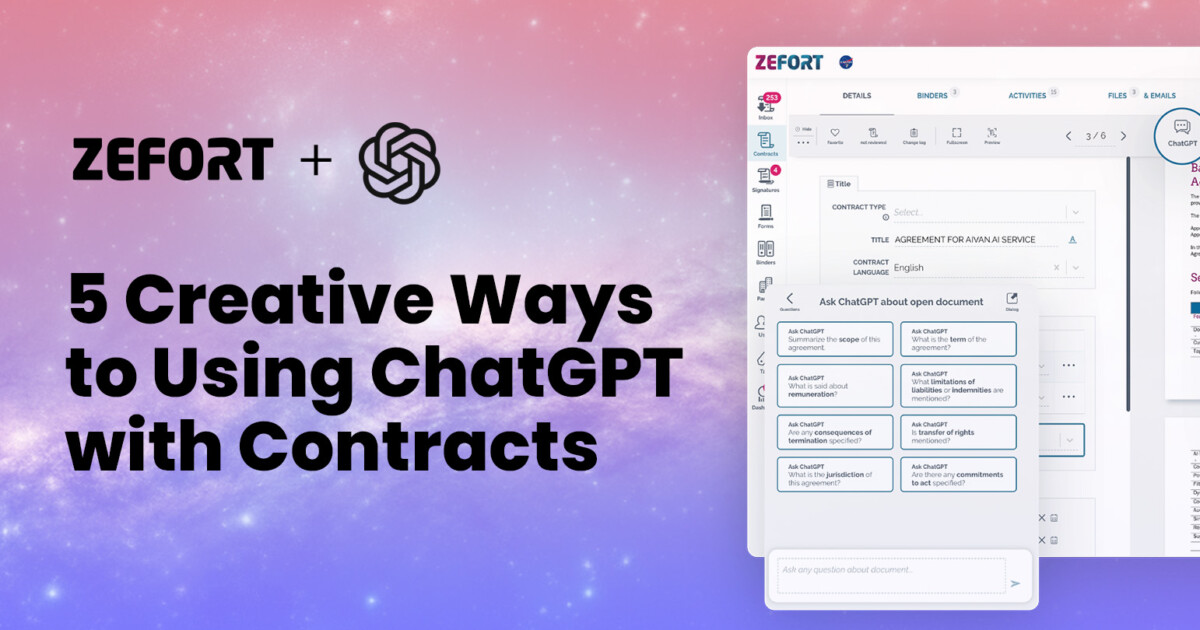Boost Your Business with Electronic Signatures
Have you already started with electronic signatures? If not, what’s holding you back? Being able to sign documents digitally is not yet another burden on your processes – quite the contrary. No matter the size or domain of your business, electronic signatures are likely to make your life a lot easier and more productive.
To get your creative juices flowing, here are some examples of how you can utilize digital signing in various business cases.
Save time (equals money)
In today’s business, saving time and effort results in saved money. Compared to traditional ink on paper, using electronic signatures means that you don’t have to worry about sending out paper copies of a contract or booking face-to-face meetings. Simply send off a signing request from your contract management tool and you’re on your way!
Electronic signatures can also significantly speed up entire business processes. When you can get an important signature in a matter of minutes (instead of days), you can close deals and make agreements faster.
Automate processes
Electronic signatures are an important enabler for automated processes. Instead of manually sending documents via email or traditional mail, you can use software to automatically send signing requests and archive signed documents. You can also automate things like reminder messages or the distribution of the signed document.
Automation is particularly useful for high-volume B2C businesses. If your daily number of new customers jumps from 100 customers to 500 customers on a peak day, an automated process can handle the volume increase and eliminate delays for both you and your customers, resulting in a better customer experience.
Enable international operations and recruitments
Today, many companies engage in international business operations or hire international professionals to work either for their organization or for their clients remotely. Some companies, such as the SaaS company TalentBee, specialize in recruiting talent in international markets and are well-versed in the challenges specific to the industry. Using electronic signatures is not only an enabler for international operations but it can also add an extra level of security.
By using a nationally available strong digital identification method together with the electronic signature, you can verify the identity of your employee or business partner at the beginning of your relationship with certainty.
Speed up administrative work
Large organizations come with lots of internal administrative work. From board meeting minutes and annual financial statements to employment contracts and performance reviews, there are plenty of documents that require validation through signing.
A digital signing process provides an easy, convenient way to reach out to internal stakeholders and get their sign-offs faster.
Manage risks and meet requirements
Depending on your industry, various regulations or legal requirements may affect your business. For example, you might be required to verify the identity of your customer. Digital signatures that utilize strong digital identification help you fulfill compliance requirements and manage your risks.
Add visibility to signing process, build trust
If it is your responsibility to ensure that documents actually get signed, electronic signatures have a lot to offer. When you send out signing requests from a digital system, you can typically track the status of each signee: have they opened the signing request or reviewed the document yet and, eventually, get an instant notification once the signature has been completed. Electronic signatures create timestamps, hence you can always track when the contract has agreed by different parties.
This way, you will always know who to contact when a multi-party signing process stalls. Or, better yet, you can leave it up to your contract management system to send out reminders and gentle nudges to the person keeping the process on hold. Remember that adding visibility to your signing process you not only make life lot easier, but also build rapport between you and your customers.
If you want to learn more about electronic signatures, we recommend reading our free eBook The Ultimate Guide to e-signatures. It’s a good resource to get started on the basics but also touches on topics like optimizing your CLM process and understanding the essentials of EU eIDAS regulation that makes eSignatures legally binding.





